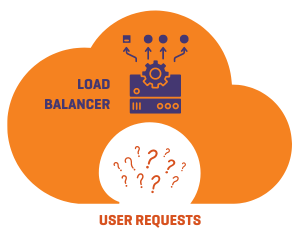Load balancer – a new service in Atman Cloud
 As part of the development of Atman cloud services, we have introduced a network tool called load balancer, for distributing tasks among multiple virtual machines according to an algorithm chosen by the customer. The new service is available in Atman Cloud, which is a public cloud based on OpenStack virtualization technology.
As part of the development of Atman cloud services, we have introduced a network tool called load balancer, for distributing tasks among multiple virtual machines according to an algorithm chosen by the customer. The new service is available in Atman Cloud, which is a public cloud based on OpenStack virtualization technology.
The main benefit of using load balancers in an Infrastructure as a Service (IaaS) cloud such as Atman Cloud is to significantly increase the availability of a customer’s web applications or websites, thus protecting against the consequences (e.g. financial) of potential outages. In addition, load balancing speeds up the handling of requests from users of such sites, thus positively impacting the customer experience.
Atman Cloud’s load balancer service can be launched in one of three capacities, i.e. with a throughput of up to 200, 500, or 1000 Mbps. The customer also decides on the configuration of a given load balancer (HTTP, HTTPS, HTTPS_TERMINATED or TCP) and chooses its algorithm from the three available:
- Round Robin – requests are assigned to servers in the list one at a time.
- Least connections – a new request goes to the server with the least active connections at the moment
- Source IP – subsequent requests from a given source IP address are routed to the server that received the first request.
Management of load balancers in Atman Cloud, including their activation, deactivation and configuration, can be done through a number of tools, such as Horizon panel in a web browser, OpenStack CLI, API, Terraform, Ansible, etc.
By default, our load balancers are referenced in a high availability (HA) architecture. We use both logical and hardware redundancy. Like the core Atman Cloud service, the load balancers are backed by 24/7 technical support and a 99.97% SLA.
The billing method for Atman Cloud’s load balancer service is simple and economical. We use a pay-as-you-go model, which means that the customer pays for each full or started hour of the load balancer’s work, and the hourly rate depends only on its performance. It is also worth noting that the customer does not bear the cost of data transfer.





 The website uses cookies as described in our
The website uses cookies as described in our 